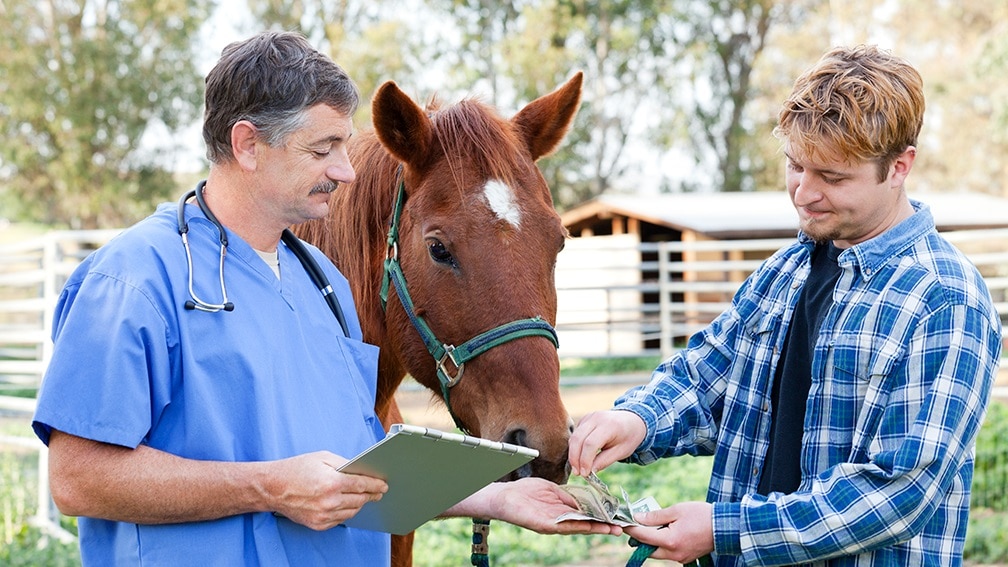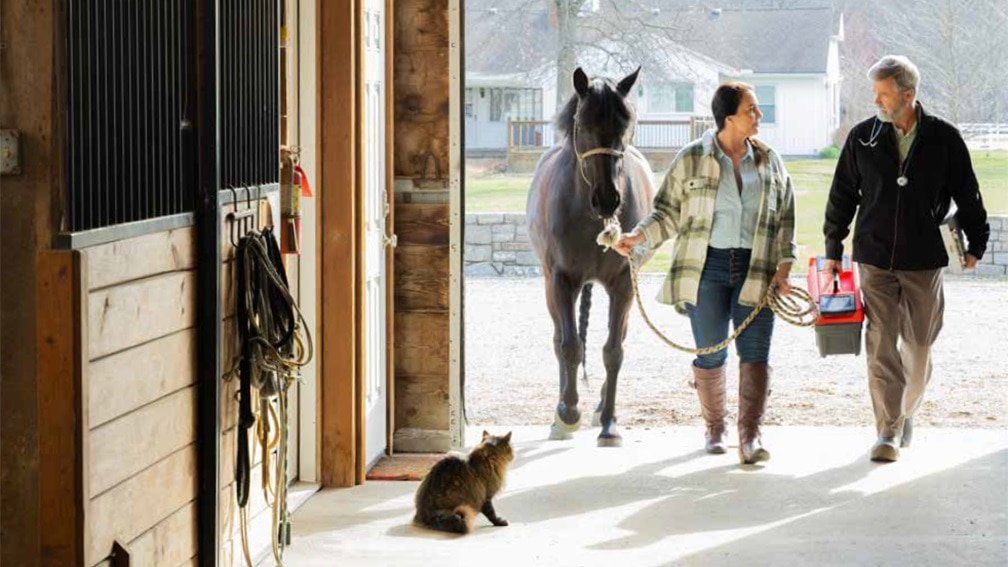The balance of passion and practice
Equine veterinarians can balance a passion for equine care and financial best practices for a more harmonious and successful work/life balance.
By Kimberly S. Brown
Posted Sep 05, 2023 - 7 min read
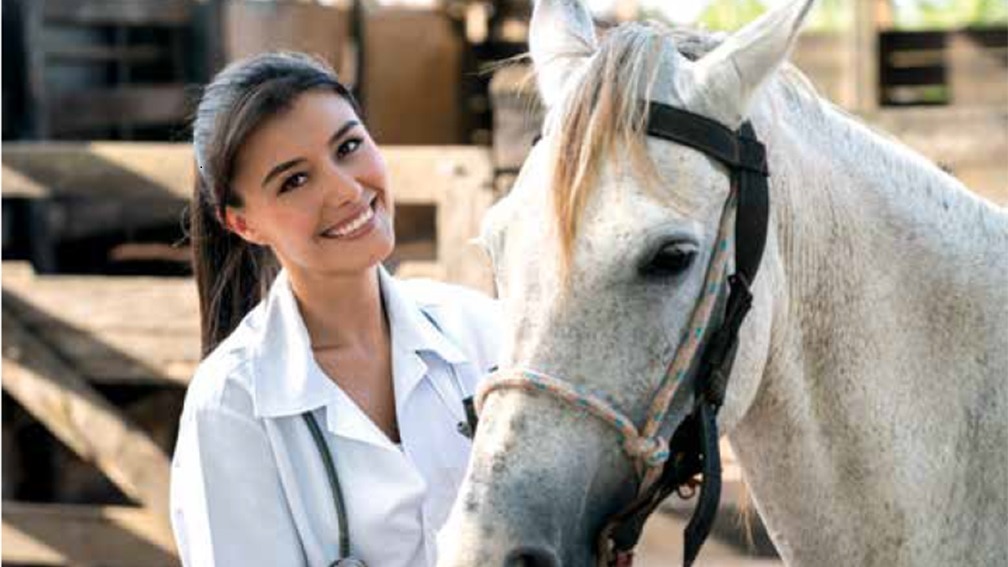
All veterinarians struggle to find the right balance between their love of equine practice and developing the right boundaries to give themselves a more harmonious work/life balance. Amy Grice, DVM, MBA, said that veterinarians are “helpers. We’re there to serve. And bringing money into it sort of dirties it or sullies this feeling of helping.”
So how can the industry provide a career in equine veterinary medicine that provides this balance, thus attracting the brightest, most passionate vet school graduates to the profession? A culture shift is underway that hopefully will provide a career and lifestyle that means a long, happy life as an equine veterinarian.
Today’s pain points
One of the first issues is that veterinarians must understand they are small business owners. The business side of equine veterinary practice— especially for solo ambulatory veterinarians or smaller practices—is hard for many individuals. They went to school to care for animals, not study spreadsheets.
But, without a good business foundation, today’s equine practices can’t afford to give tomorrow’s veterinarians the lifestyles they want.
There is a crisis playing out in the profession. Grice recently highlighted evidence of this crisis with these facts:
- Throughout 2021, about 500 equine veterinary associate positions have consistently been available in the country.
- Only about 40 vet school graduates enter equine practice each year, while about 60 older practice owners retire.
- Equine practitioners have a career and lifestyle that means about half of graduating veterinarians who do enter equine practice leave in the first five years.
Without some major shifts in entrenched culture, the future of equine practice is in jeopardy, according to Grice and others. But they say a culture shift is within reach. If veterinarians learn to value themselves and their services, take proactive steps toward financial health, and address the lifestyle issues that contribute to stress and dissatisfaction, they can turn the tide. “We have the capability to have a positive future. We just have to create new paradigms in equine practice,” said Grice.
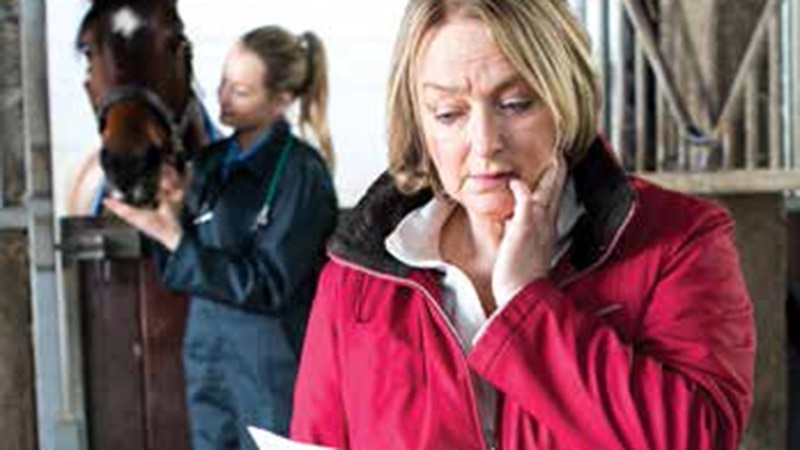
Help for the ‘helpers’
CareCredit, a financing solution for veterinary clients, recently convened a roundtable of experts for a discussion of the current industry and what has and should change. In this article, we will share highlights from the panelists’ comments. A longer article will appear on EquiManagement.com that will offer additional insights, personal experiences and practice tips from roundtable participants that can help practices improve their financial relationships with clients, resulting in less stress for equine veterinarians.
The panelists were: Grice, who practiced for more than 20 years before starting Veterinary Business Consulting. She is the AAEP Treasurer until 2023 and is a member of the AVMA Economic Strategy Committee. Charlotte Hansen, MS, is the assistant director of statistical analysis at the AVMA in the Veterinary Economics Division. She specializes in equine economics and geospatial analysis. Wendy Krebs, DVM, is a partner and co-owner at Bend Equine Medical Center in Oregon, where she focuses on equine surgery, performance horse sports medicine, internal medicine and comprehensive preventive care. Kyle Palmer, CVT, manages VCA Salem Animal Hospital in Oregon. During his 29 years in the veterinary field he has been manager of a mixed equine and companion animal practice, executive director of Northwest Equine Practitioners Association, a consultant, and an author in veterinary management magazines. Kelly Zeytoonian, DVM, MBA, is the owner of Starwood Equine Veterinary Service and Starwood Veterinary Consulting in California. Zeytoonian serves on the Board of Directors of the Northern California Association of Equine Practitioners.
The Importance of getting paid at time of service
One critical point that came from the roundtable discussion was that small animal veterinary professionals have adopted the practice of getting paid at time of service, while their equine counterparts have struggled to do so. Small animal practices also are more likely to help clients understand financial preparedness and offer financing options.
About 15 years ago, Krebs’ practice decided to change its protocol to getting paid at time of service. They knew they would have to continue to deal with absentee owners and clients who forgot their credit card or checkbook, but they made an expectation for immediate payment their default.
“You start to train your clients on that expectation [getting paid at time of service], and you start to train your support staff that they need to get that credit card number on file or make other arrangements for payment when they make the appointment, and things eventually start to fall into place,” she said. “I think it’s a change of mindset.”
Krebs said equine veterinarians currently feel that “it’s rude to talk about money” or “we’re going to make the clients uncomfortable talking money” when it’s really the opposite. “We’re going to make them uncomfortable if they don’t know how much they’re going to spend.”
A mantra Krebs tries to live by comes from equine practice management expert Andy Clark, DVM, MBA: “You should never surprise the client,” she said. “You should not surprise them when you ask them for payment at the time of service, and you should not surprise them with an invoice they’re not prepared for.”
This means it’s essential to communicate about financial preparedness when the appointment is made. Krebs’ customer service team is trained to ask, “How do you plan to pay today?” or, better yet, “Do you have a credit card we can keep on file?”
“Our equine vets are not the best at waiting around; they might be trying to get to another emergency,” Krebs said. But if they know there’s a credit card on file and say to the client, “We’ll just put those charges on the card you have on file, right?” 95% of the time the client will agree.
Zeytoonian’s practice has a policy in place that payment must be arranged before a veterinarian will go out on a weekend or see a new client. “They say, ‘Once I see that the email [about payment] come through with the paperwork, then we can get something on the schedule,’” she said. “That has been super helpful for our team.”
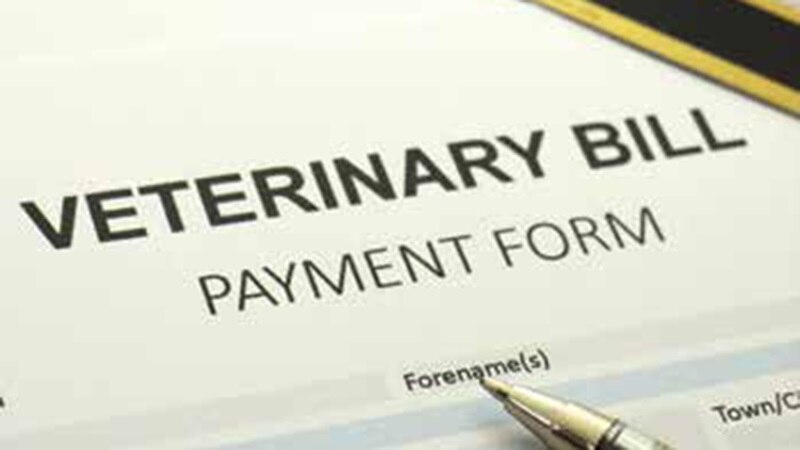
It's more than just money
For equine practice owners, living month to month and wondering how to pay the next bill is a source of constant anxiety, Palmer said. “I think, by and large, most veterinarians would love to pay their staffs more,” he said. “I don’t think enough veterinarians understand how vital it is and that they are undercharging chronically and under collecting regularly. Those two things really cause waves of stress that go throughout the practice.”
When associates are not able to get paid because of client nonpayment and underpayment, it makes their already stressful lives even more challenging, he continued. “It makes it difficult to stay in a job. It makes it difficult to stay in this industry,” Palmer said.
Grice agreed. “It starts to feel for people like they’re sacrificing their life on the altar of veterinary medicine,” she said. “They see their friends or people outside of veterinary medicine having a normal life. And they feel trapped in this thing that they love but that is eating them alive.”
Finding a way out that doesn’t entail leaving the profession involves some deep soul-searching. “Equine practitioners need to embrace the value that they provide and feel confident in charging appropriately for what they do,” Grice summarized.
Take-home message
Business, money, life, stress … they are all tied together for equine veterinarians. And some horse owners add to that stress with demoralizing statements about the cost of services or by not paying for services rendered. But several roundtable participants have learned to create healthy emotional and financial boundaries in their practices. Krebs said, “As I mature, I just don’t let them [clients] put that financial stress on me. I am there to help them to the best of my capability and within their resources, but it does not fall on my shoulders to enable them financially.”
This doesn’t mean she doesn’t show compassion. “I absolutely acknowledge to them the stress of the situation that they’re under,” she continued. “I acknowledge that it’s expensive, and I’m empathetic. I can help provide solutions that are within their means. But that does not mean that I need to be the one that subsidizes their animal’s health care.”
Zeytoonian expounded by saying, “My job is to provide you [the client] with all of the options for care and give you a path to health and wellness for your horse. And my job is also to educate you on insurance opportunities and payment options—none of which involve the practice of putting somebody on a payment plan or subsidizing the care of the animals.”
The panelists were in agreement that building a personal relationship with clients is key to financial discussions. “With the relationship, then the transactional part becomes so much easier,” said Grice.
“When the client knows what to expect financially from the beginning of the relationship and they have a plan for payment, … that allows the veterinarian and the horse owner to be on the same team,” concluded Grice. “Then they can both just concentrate on caring for the horse, which at the end of the day is what veterinarians really want to do.”
A recent study examined how equine veterinary professionals balance the love of their profession (and horses) with the business side of their practice. View the study.
Healthcare payment and financing solution
The CareCredit health and wellness credit card helps improve the payment experience for patients and clients, and your financial performance.
Get StartedReady to help more patients and clients get the care they want and need?
Get StartedReady to help more patients and clients get the care they want and need?
Get StartedThis content is subject to change without notice and offered for informational use only. You are urged to consult with your individual business, financial, legal, tax and/or other advisors with respect to any information presented. Synchrony and any of its affiliates, including CareCredit, (collectively, “Synchrony”) make no representations or warranties regarding this content and accept no liability for any loss or harm arising from the use of the information provided. All statements and opinions in this article are the sole opinions of the author and participants. Your receipt of this material constitutes your acceptance of these terms and conditions.



